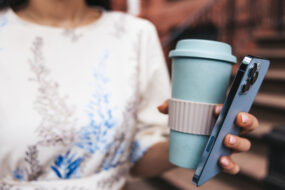Best ways to store food without wrecking the environment
When it comes to storing food, there are many eco-friendly alternatives to plastic. But which are best for the planet – not to mention your health?
From cling wrap, to zip-lock bags, food packaging and the vast collection of plastic containers cluttering kitchen drawers and corner cupboards, there is scarcely a job plastic cannot accommodate.
But some studies have found certain chemicals in plastics can leach out and into food and drinks, and have been linked to health problems ranging from metabolic disorders to reduced fertility.
Plastic can also have a devastating impact on the environment. Up to 130,000 tonnes ends up in the ocean each year and much plastic is sent to landfill, where it can take hundreds of years to break down.
But good food storage is an important step in cutting the 7.3 million tonnes of food wasted each year – that’s around $3800 of groceries in the bin for the average household.
Storing food so it lasts not only helps your hip pocket, but it’s an important cog in the sustainable lifestyle wheel as it reduces methane emissions from landfill and conserves energy and resources in the production of food.
- Cut back: 3 ways to go plastic-free at home
So what can you use instead of plastic?
1. Bamboo
Bamboo is fast growing, requires no chemicals and little water, can be found in abundance in large parts of the world, and is 100 per cent biodegradable.
However, note that bamboo containers are not recommended for microwaving.
2. Glass
Glass containers are freezer, fridge and microwave friendly, made from natural materials such as sand, and can generally be recycled (heat resistant glass cannot).
Approximately 56 per cent of glass packaging is recycled in Australia.
However, only a particular type of sand can be used to manufacture glass, which comes mostly from riverbeds and seabeds and can disrupt the ecosystem.
Glass is also heavier than plastic so it’s more expensive to transport.
“In general, we consider glass a solid choice because it can be completely recycled many times over,” says Catie Payne, of Sustainable Table.
3. Stainless steel
Stainless steel is non-toxic, durable, and 100 per cent recyclable. More than half of new stainless steel produced has been another stainless steel product in the past.
“Stainless steel lasts forever, is made from a high percentage of reclaimed materials, and can be recycled at the end of its life,” says Catie.
4. Beeswax wraps
These are cloths coated with beeswax to enable them to cling to food or containers.
They’re able to be washed (not with hot water) and reused for up to 12 months.
However, beeswax is not recommended for raw meat, and while it is bendy, it can be tricky to get a firm “cling”.
5. Silicone bags or food huggers
Silicone products can be very flexible and withstand high temperatures, as well as being non-toxic, durable and reusable.
Made from silicon, a naturally occurring element that can be found in sand and quartz, silicone is not biodegradable.
“Silicone and ceramics are made from natural materials and are non-reactive,” says Catie.
So what is the best food storage option?
If replacing old plastic containers, your first go-to should be whatever you already have at home, says Catie.
“There’s no manufactured solution that’s as good as reusing something on hand – even if that something is plastic,” she says.
Sustainability Victoria chief executive Claire Ferres Miles says: “Start by storing food in reusable containers that you have at home – make sure they are clean and do not have any cracks.”
Contrary to popular custom, not everything needs to be stored in an airtight container to extend its longevity, says Catie.
“Knowing what you can store in ambient temperatures – like leafy greens in a glass of water on the bench top, onions in a canvas bag and pumpkins in the bottom of the pantry – saves energy by minimising unnecessary refrigeration,” she says.
More sustainable living tips:
- 6 ways to banish plastic from your bathroom
- 5 habits that are good for you and the planet
- How to start your own veggie garden
Written by Claire Burke.






